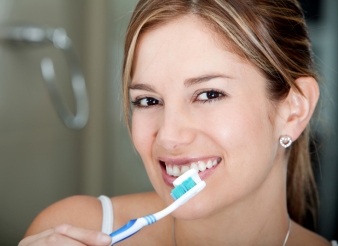It's Back-to-School Time . . . Are You Ready?
September 6th, 2017
 It's back-to-school time, and parents everywhere are checking school lists, buying classroom must-haves, and scrambling to find that perfect pair of sneakers. If you're undergoing orthodontic treatment, we'd suggest adding a few extra supplies to your backpack. Here's a list of items that will help make your school year braces-friendly and worry-free:
It's back-to-school time, and parents everywhere are checking school lists, buying classroom must-haves, and scrambling to find that perfect pair of sneakers. If you're undergoing orthodontic treatment, we'd suggest adding a few extra supplies to your backpack. Here's a list of items that will help make your school year braces-friendly and worry-free:
Orthodontic wax - Sometimes braces can be irritating to the mouth. If you have a poking wire or a loose bracket, a small amount of non-medicinal relief wax makes an excellent buffer for your gums. It will keep you in school and out of discomfort until you can visit our office for repair.
Elastics (rubber bands) - If Dr. Godwin has prescribed elastics, they must be worn as instructed. Often, they are worn 24/7, except while eating and brushing your teeth. During the school day, you should remove the elastics for lunch, but don't forget to replace them with fresh, clean elastics when you are through. Packing an extra bag of elastics will ensure that you have them available at all times.
Travel toothbrush and floss - Keeping your teeth and braces clean throughout orthodontic treatment is a priority. Besides that, your friends and teachers don't want to look at food stuck to your braces - Yuk! Keep your teeth and Dr. Godwin happy . . . Remember to brush after every meal.
Floss Threaders and Interproximal Brushes - Orthodontic appliances can often make flossing and brushing more challenging. Products like floss threaders and proxy brushes can help take the hassle out of cleaning around brackets and wires. Proxy brushes are great for removing trapped food particles that can get lodged in and around orthodontic appliances. Floss threaders and products like Oral-B Superfloss are made with special, rigid ends that make flossing with braces much easier and more effective.
Retainer case - If you are wearing removable orthodontic appliances, you'll need to take them out before eating lunch. When retainers or other removable appliances are not in your mouth, they should ALWAYS be in a retainer case. Most retainers are lost in school cafeterias or restaurants, so keep yours safe . . . Take your retainer case to school!
Braces-friendly snacks and/or lunches - Pack non-stick snacks and lunches that are easy to chew and won't damage your orthodontic appliances. Don't forget to stay away from sugary drinks and treats that can lead to cavities. There are lots of braces-friendly alternatives. For more ideas, visit bracescookbook.com
If you have any questions, or need any of the above items for your backpack, feel free to contact the team at Bel Air Orthodontics. We hope you have a fun and successful school year!




